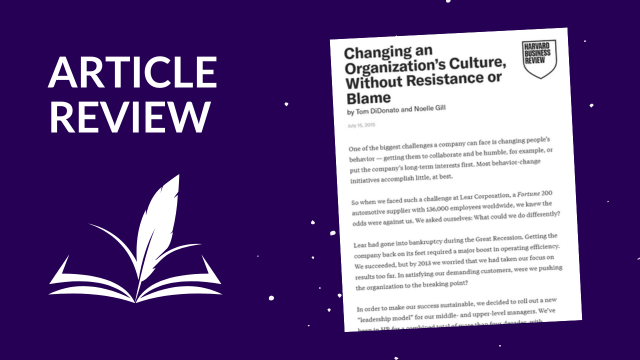Peter Drucker wrote, “Culture eats change for breakfast.” As a change practitioner, you have likely been engaged to support “culture change” initiatives in the past. It is also likely that the cultures that were supposed to change were “eaten for breakfast.” Much like our individual muscle memory and neural networks, for the most part, organizational culture operates outside of our conscious attention. And much like muscle memory and neural networks, culture is difficult, but not impossible, the change.
In Catalyzing Culture Change in the Workplace for Sustained Results, Deloitte lays out a five-step process for culture change.
- Narrow Your Scope. This step involves developing or reaffirming the vision, mission, and scope of the culture change, identification of key stakeholder groups that need to change, understanding “underlying business levers that influence their behavior—the “culture web,” and finally defining the core values that will activate the change.
- Tell the Culture Story. This is not about FAQs, but true business storytelling.
- Ideate Initiatives. Engage people around defining the change initiatives that will bring about the desired cultural changes. Create an environment that allows co-creation, rather than one that passes judgment on the ideas that are brought forward.
- Build and Execute Your Sprint Plan. Culture change is an iterative process that can take years to successfully execute. Approach it as such.
- Measure, Iterate, and Repeat. Use an agile approach to ensure that your culture change initiative remains on track and that progress continues over time.
The online summary of this report (there is also a more comprehensive free downloadable PDF) does not address two other critical elements of culture change. First, undertaking a culture change for the sole purpose of changing the culture significantly increases the likelihood of failure. It should always be in service to other organizational, customer-facing, and business outcomes. Second, as you go through this process, remain attentive to the elements of the culture that are not changing. Continue to ensure alignment between the changes being identified, planned for, and executed and those “cultural anchors” that are remaining in place. This will help to lessen the sense of disruption that any culture change creates, and will increase your likelihood of success.







